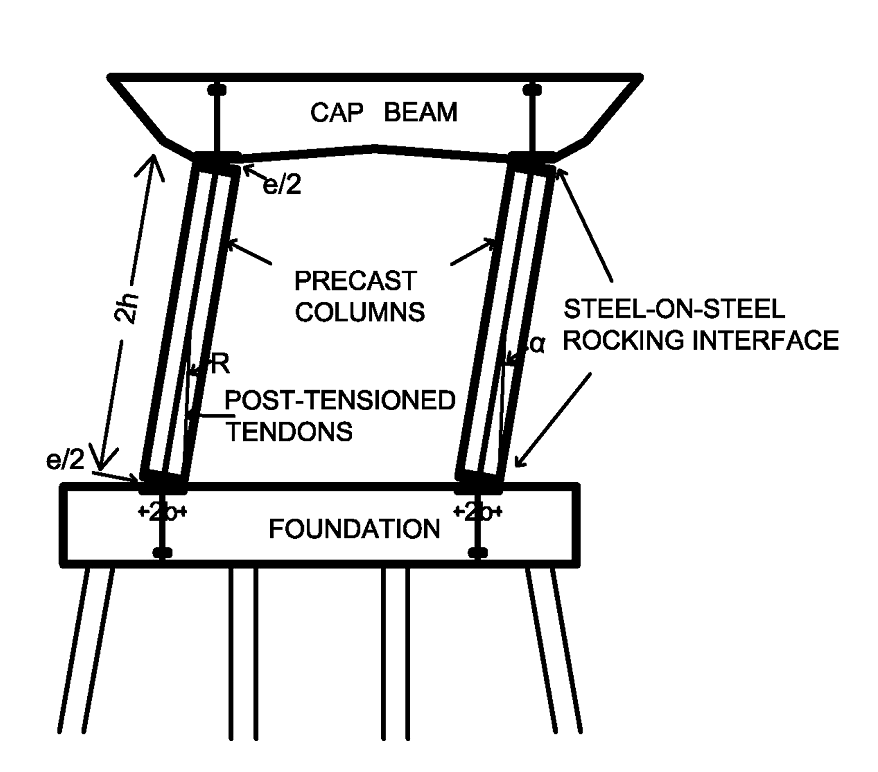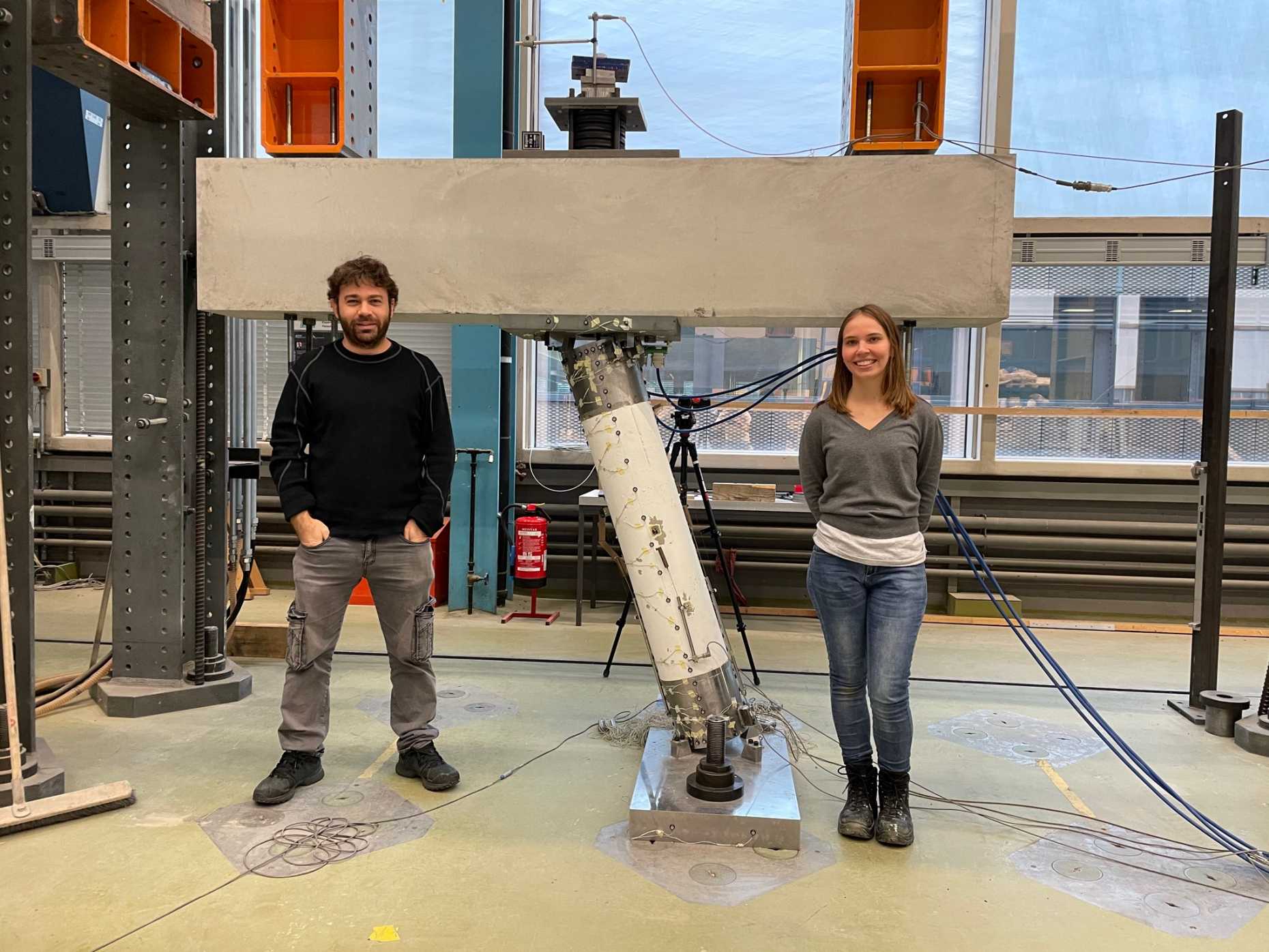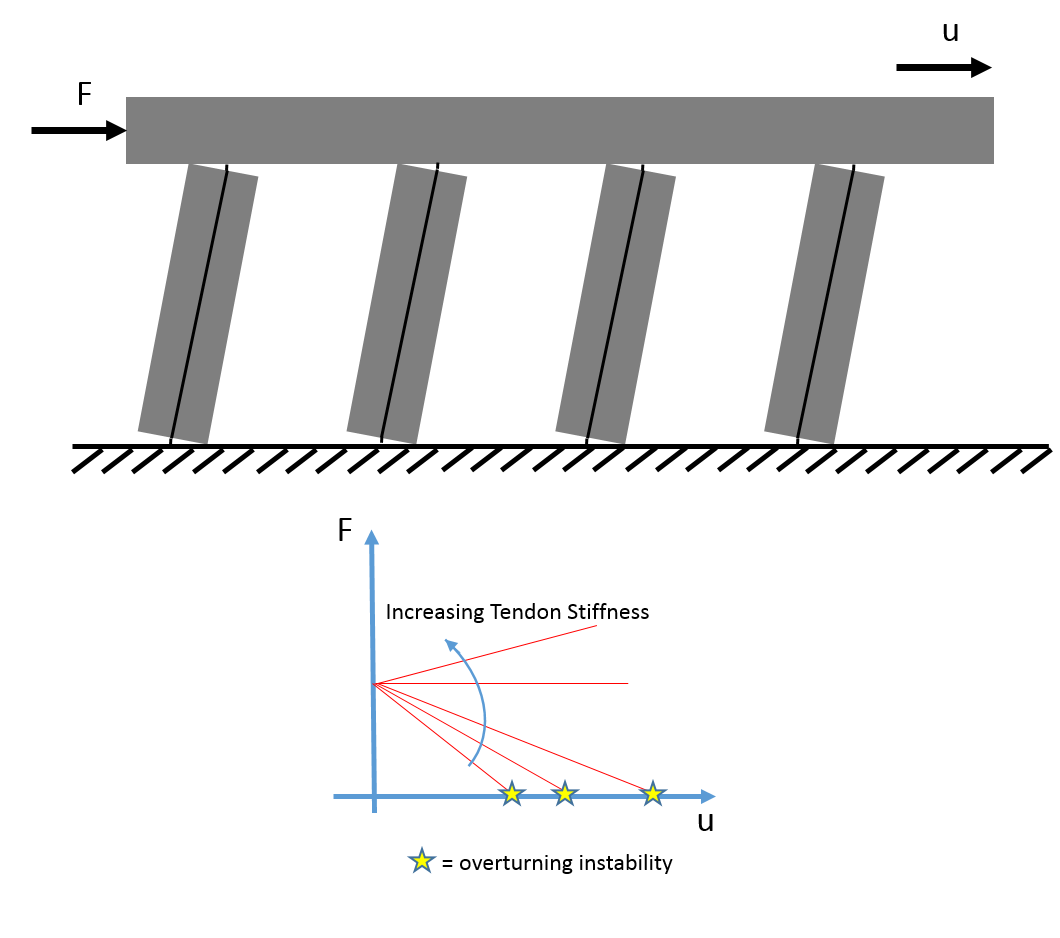Negative Stiffness Bridges
Since the 1970s seismic design is based on avoiding collapse, but allowing for damage. This saves lives and is a strategy that was economically justified. However, this approach virtually guarantees structural damage and offers little information about how costly may the post-earthquake repairs be or how long they may last. This calls for structures that present minimal post-eqarthquake residual deofrmations. In parallel, prefabricated bridge elements and systems offer significant advantages in terms of construction time, safety, environmental impact, constructability, and cost. Prefabrication can also help minimize the impact on traffic from bridge construction.
The above resulted in the Damage Avoidance Design concept, where prefabricated elements are pre- or post-tensioned using restraining tendons. This project aims to show that making the restraining tendon axially flexible (or even not using a tendon at all and relying on gravity) decreases the foundation design moments, possibly avoiding pile foundations and drastically decreasing the cost of the bridge.
The idea of using of a flexible (or no) tendon is based on the excellent dynamic stability of free rocking large objects that has been proven both theoretically and from past earthquakes. However, designing a free rocking structure for public use requires more research questions to be addressed:
- There has been no large-scale shaking table experimental testing of negative-stiffness prefabricated systems.
- The flexible tendon will make the system present a negative post-uplift stiffness (smaller force for larger displacement). This makes all the design methods based on the Elastic Spectrum not applicable. Different methods need to be invented and integrated into the performance based design concept.
- The redundancy of negative-stiffness systems (i.e. their ability to survive earthquakes larger than the ones they were designed for) has not been explored.
This project aims in addressing the above issues by performing shaking table tests to validate the existing (potentially simplistic) numerical models, by developing totally new design spectra suitable for negative stiffness structures, and by proposing mechanisms that will increase the redundancy of such systems.
The project challenges the long standing belief that structures should have positive stiffness and always “stick” to the ground. It is socially useful because it reduces the cost and construction time of earthquake resistant structures.
Funding: ETH Grant ETH-10 18-1 (PI: Michalis Vassiliou)
Duration: 1.4.2019 - 31.3.2022
PhD Student: Natalia Reggiani Manzo


